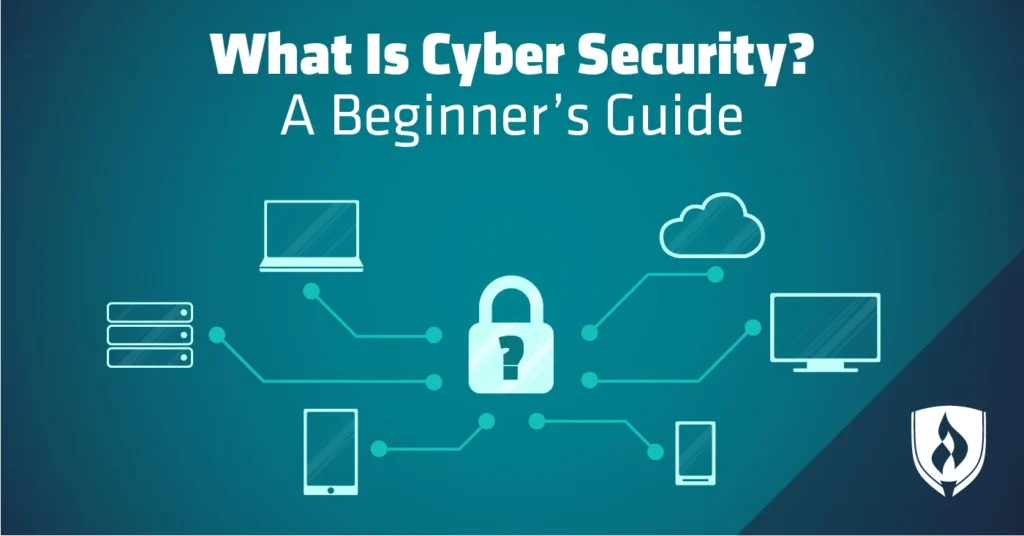Cyber Security for Beginners
The Cyber Security for Beginners course introduces the basics of protecting computers, networks, and data from cyber threats. It covers topics like types of cyber attacks, firewalls, antivirus, and safe internet practices. Perfect for students and professionals starting their journey in the cybersecurity field.

What You Will Learn
Course Curriculum
Chapter 1: Introduction to IT and Networking Basics - What is Information Technology? - Overview of Computer Hardware, Software, and Networks - Basic Networking Concepts (LAN, WAN, IP, DNS, TCP/IP) - Introduction to the Internet and Web Technologies
Chapter 2: Introduction to Cybersecurity - What is Cybersecurity? - Threats, Vulnerabilities, and Risks - Goals of Cybersecurity: CIA Triad (Confidentiality, Integrity, Availability) - Types of Cyber Attacks (Phishing, Malware, DoS, etc.)
Chapter 3: Understanding Cybersecurity Domains - Overview of Different Domains: Network, Application, Cloud, Endpoint - Key Concepts in Each Domain
Chapter 4: Security Roles Across Industries - Roles in IT: SOC Analyst, Penetration Tester, Security Engineer - Banking Sector: Risk Analyst, Compliance Officer - Telecom Sector: Infrastructure Security, SIM Cloning Defense - Healthcare, Government, E-commerce Security Profiles
Chapter 5: Zero Trust Architecture - Principles of Zero Trust - Zero Trust vs Traditional Perimeter Security - Key Technologies: MFA, Identity, Microsegmentation
Chapter 6: Introduction to Security Frameworks - Overview of NIST Cybersecurity Framework - Key Functions: Identify, Protect, Detect, Respond, Recover
Chapter 7: International Standards and Compliance - ISO/IEC 27001: Information Security Management System - HIPAA: Protecting Health Information - GDPR: EU Privacy and Data Protection Regulation - Indian Cybersecurity Law Overview (IT Act, CERT-In Guidelines)
Chapter 8: Operating System Security (Windows & Linux) - Basic Security Features in Windows (UAC, Defender, GPOs) - Basic Security Features in Linux (sudo, iptables, file permissions) - Securing Services and Logs
Chapter 9: Identity and Access Management (IAM) - Authentication vs Authorization - Password Policies, MFA - Role-Based Access Control (RBAC)
Chapter 10: Network Security Essentials - Firewalls, IDS/IPS - VPNs and Proxies - Port Scanning and Defense
Chapter 11: Application Security Basics - OWASP Top 10 - Secure SDLC - Code Vulnerabilities and Secure Coding Practices
Chapter 12: Security Operations and Incident Handling - Introduction to SOC - Log Analysis and SIEM Tools - Incident Response Lifecycle
Chapter 13: Ethical Hacking & Penetration Testing - Phases: Reconnaissance, Scanning, Gaining Access, Maintaining Access - Tools Overview: Metasploit, Nmap, Burp Suite
Chapter 14: Defensive Security Measures - Endpoint Security Solutions - Antivirus, EDR, Patching - Security Awareness Training
Chapter 15: Security Tools and Utilities - Wireshark Basics and Traffic Analysis - Nmap, Netstat, TCPdump, John the Ripper - Hashing and Encryption Utilities
Chapter 16: Hands-On Labs and Exercises - Lab: Packet Capture with Wireshark - Lab: Basic Vulnerability Scanning with Nessus/OpenVAS - Lab: Linux Hardening Basics - Lab: Log Analysis with Graylog or ELK
Chapter 17: Cloud Security Overview - Shared Responsibility Model - Cloud Threats and Mitigation - Intro to SaaS, PaaS, IaaS Security
Chapter 18: AWS Cloud Security Introduction - IAM in AWS - AWS Security Tools (CloudTrail, GuardDuty, WAF) - Securing S3 Buckets and EC2 Instances
Chapter 19: Cybersecurity Career Roadmap - Certifications: CompTIA Security+, CEH, OSCP, CISSP - How to Build a Portfolio - Interview and Resume Tips
Chapter 20: Final Project & Assessment - Group Project: Simulate a Real-World Security Scenario - Online Assessment Quiz - Feedback and Course Wrap-Up
Hands-on Labs & Projects
1. Simulate a brute force login and detect it via logs.
2. Identify vulnerabilities in a basic PHP app.
3. Design IAM roles for a cloud-based banking app.
4. Capture and analyze a DNS spoofing attempt.
5. Create a basic incident response report.
We have many more labs excercised exclusive for our enrolled students, enroll today to join our security ACE group.
Who Should Enroll?
Anyone who is unterested in Cyber security and making internet a secure place for everyone can join this course, you need to have bacis knowledge on Information technology
